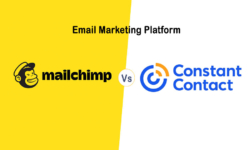When you have only just begun researching the different entity structures for your business, it may all seem confusing and intimidating. Don’t be scared easily. There are advantages to each business structure type. It all depends on what your goals are, and what your local, state and federal law dictates. Whatever business structure you opt for, you are not stuck with that option forever. You can change as your business grows.
If you are feeling overwhelmed by the entire process, and not sure which structure to go for, stay on this page. By the end of this article, you would have a clear understanding of what the different entities are and be able to choose which type is the right fit for your business.
Business Structure Types
Each new business owner goes through the stage of finding out about the different business structure types. You get to choose whether you go through the task of researching all about them on your own or seek help from experts like ZenBusiness who’ve spent years assisting business owners doing the same and later on help them form the business structure they eventually decided on. It all boils down to what your budget looks like and how confident you see yourself making the right choice.
Let’s get started! There are five business structure types you can choose from:
1. Sole proprietorship
Choosing a sole proprietorship structure means you, as the business owner, claim sole responsibility in handling profits and settling debts. This business structure type is the simplest kind. If you’re a business owner, and don’t have a storefront, filing for sole proprietorship allows you full control. However, the disadvantage lies in the fact that it doesn’t allow distinction between personal and professional assets. If your business grows, being in this structure may prove to be difficult later on.
2. Partnership
This structure is appropriate when there are two or more people involved. Partnership can be classified further into 2 subtypes: General partnership and Limited partnership.
A general partnership is when everything is to be shared across all members, while a limited partnership means only one person remains in control while the other only contributes and receives a percentage of the profits.
Setting up a partnership business structure costs more than filing for sole proprietorship. On top of the filing process, you may want to consider hiring an attorney to make sure shares, profits and structure is set up accordingly and won’t cause any issue later on.
3. Limited Liability Company (LLC)
An LLC is the most popular business structure. Unlike in sole proprietorship when one’s personal and professional assets can’t be distinguished, having an LLC set up does this expertly. It shields personal assets from getting involved in any issue that may come in when the business goes into debt.
4. Corporation
The law treats a corporation as a separate entity. Corporations can be further classified into C, S or B corporations, non profit and close corporations. Costs and fees vary depending on the state you are in.
5. Cooperative
The process involved in filing for a cooperative can be long and complex. The structure is unique in the sense that the members enjoy the offers of the business structure as well.
Whichever business structure you decide to go for, make sure that you have a business plan in place to help guide you on your business’ financial needs, growth, and risks. Analyze the business needs and gauge the following: Flexibility, Complexity, Liability, Taxes and Control.
Breaking down your business into these four areas will help you gauge which business structure to go for. Take your time in understanding what and how your business offering will pan out against your budget. Again, you are not restricted into one type forever. You can make changes later on. However, to avoid additional tax concerns or potential issues in the future, it is best to get it all set up correctly from the start.







